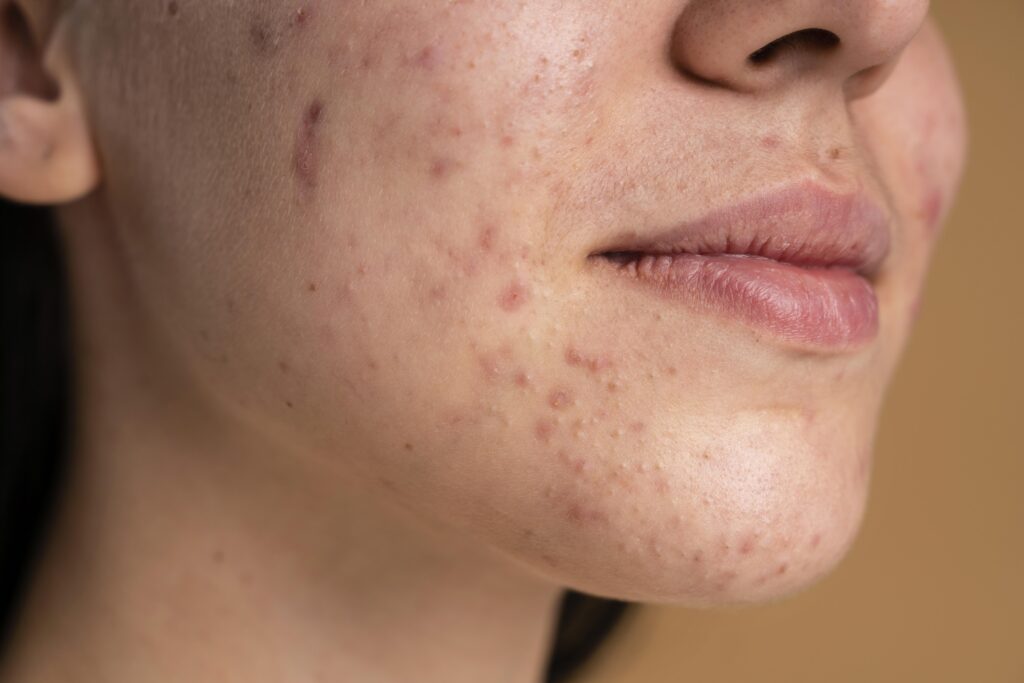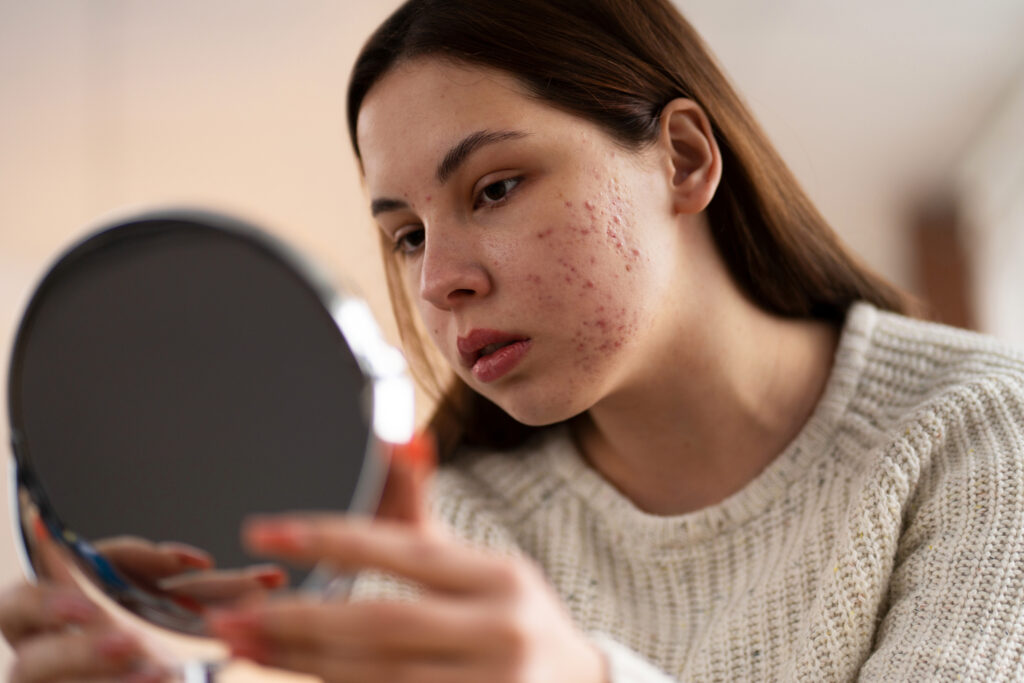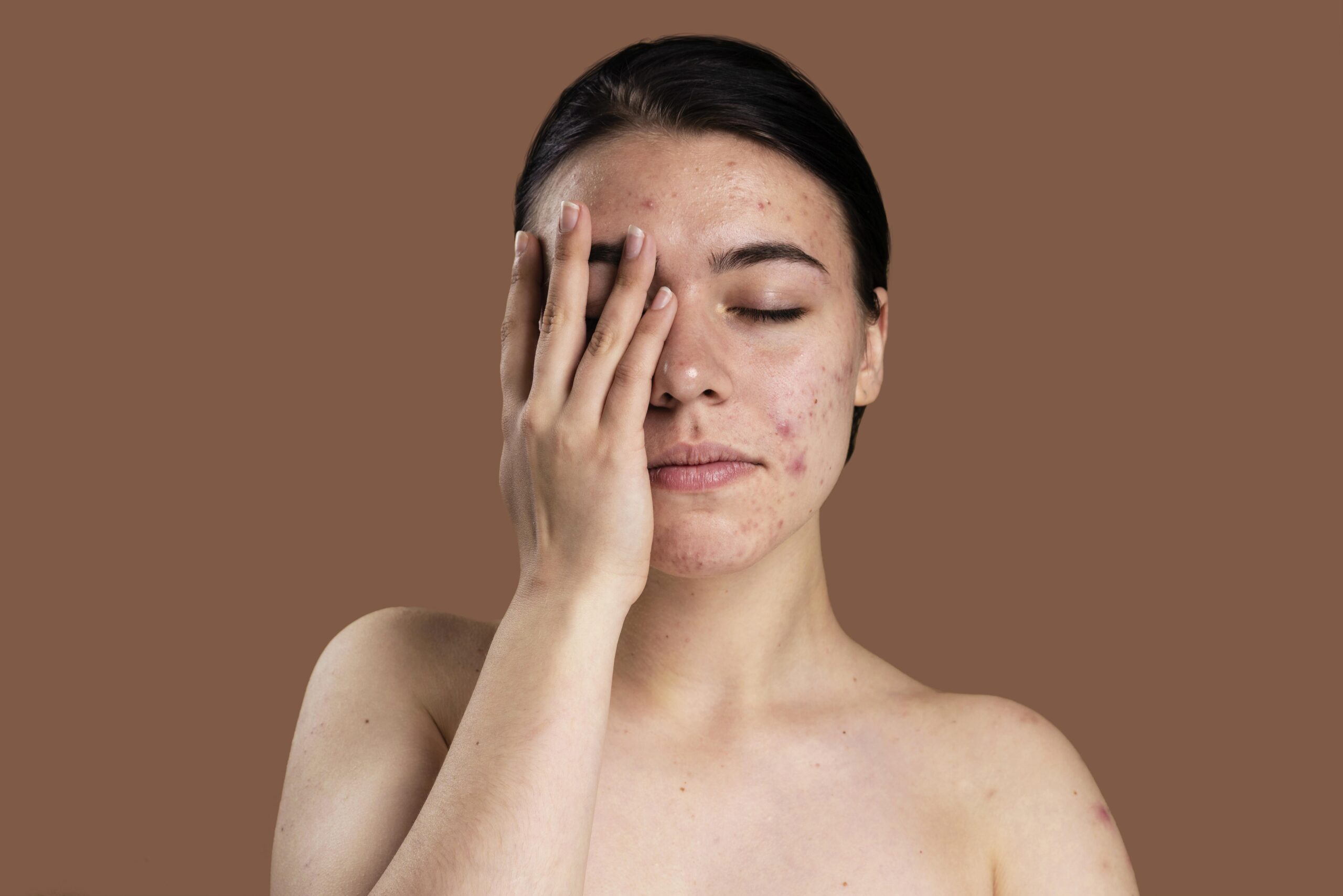Acne is not just a teenage concern, it is one of the most common skin conditions globally, affecting nearly 10% of the world’s population according to the American Academy of Dermatology (AAD). While breakouts may look similar, their underlying causes can be very different. Two of the most frequently confused types are hormonal acne and bacterial acne. Both can lead to pimples, inflammation, and scarring, but they stem from distinct biological mechanisms and require different treatments.
Recognizing whether your acne is hormonal or bacterial is essential, as using the wrong treatment approach can worsen symptoms instead of improving them. In this blog, we’ll explore the key differences, symptoms, triggers, and effective treatments for hormonal and bacterial acne, supported by recent dermatological research, so you can make informed decisions for clearer, healthier skin in 2025.
What is Hormonal Acne?

Hormonal acne occurs when fluctuations in hormones particularly androgens increase oil (sebum) production in the skin. The excess oil clogs pores, leading to breakouts. It is most common during puberty, menstruation, pregnancy, or conditions like polycystic ovary syndrome (PCOS).
Key Signs of Hormonal Acne:
- Breakouts around the chin, jawline, or lower face
- Deep, painful cysts that don’t easily heal
- Flare-ups before menstrual cycles
- Persistent acne even with regular skincare
Hormonal acne is often internal, meaning creams and cleansers alone may not fix it. Treatments usually requires targeting the root hormonal imbalance.
What is Bacterial Acne?

Bacterial acne is primarily caused by an overgrowth of Cutibacterium acnes (C. acnes) bacteria on the skin. This bacteria thrives in clogged pores filled with oil and dead skin cells, leading to inflammation and pimples that lead to skin acne.
Key Signs of Bacterial Acne:
- Red, inflamed pimples with pus
- Whiteheads and blackheads across the face and body
- Sudden flare-ups after sweating or not cleansing properly
- Responds well to antibacterial treatments
Unlike hormonal acne, bacterial acne is external and often linked to poor hygiene, excess oil, or an unbalanced skin microbiome.
Hormonal Acne vs. Bacterial Acne: Key Differences
| Feature | Hormonal Acne | Bacterial Acne |
| Cause | Hormonal fluctuations (androgens, PCOS, periods) | Overgrowth of C. acnes bacteria |
| Location | Chin, jawline, lower face | Anywhere: face, back, chest, shoulders |
| Appearance | Deep cysts, painful nodules | Pus-filled pimples, whiteheads, blackheads |
| Triggers | Menstrual cycle, stress, pregnancy, diet | Sweat, oily skin, poor hygiene, dirty makeup tools |
| Treatment | Hormone regulation, internal medication | Topical/antibacterial treatments, good skincare |
Treatments for Hormonal Acne
Fixing hormonal acne often requires balancing hormones and reducing oil production. Common treatments include:
Oral Medications – Birth control pills, spironolactone, or other hormone regulators.
Prescription Creams – Retinoids or topical treatments to prevent clogged pores.
Lifestyle Changes – Reducing sugar, dairy, and high-glycemic foods that worsen breakouts.
Stress Management – Meditation, yoga, and sleep improvement help balance hormone levels.
Dermatological Procedures – Chemical peels or laser therapy for severe cystic acne.
ALSO READ
7 Natural Skin Acne Remedies And Totkay That You Can Try At Home
Treatments for Bacterial Acne
Since bacterial acne comes from pore infections, treatments target bacteria and inflammation:
Topical Antibiotics – Clindamycin or benzoyl peroxide to kill acne-causing bacteria.
Oral Antibiotics – Doxycycline or minocycline for moderate to severe cases.
Exfoliation – Salicylic acid and glycolic acid to clear clogged pores.
Proper Cleansing – Gentle face washes to prevent oil and dirt buildup.
Lifestyle Adjustments – Showering after sweating, washing pillowcases, and avoiding dirty makeup tools.
How to Fix Hormonal Acne vs. Bacterial Acne In long term
- Balance hormones with prescribed medications like birth control or spironolactone.
- Manage stress through yoga, meditation, or regular exercise.
- Reduce dairy, sugar, and refined carbs to prevent hormone-triggered breakouts.
- Use retinoids and salicylic acid to keep pores clear and reduce acne flare-ups.
- See a dermatologist regularly for personalized treatment adjustments.
- Control bacterial acne with benzoyl peroxide and antibacterial cleansers.
- Avoid overusing antibiotics but follow short-term prescriptions carefully.
- Maintain hygiene by washing pillowcases, towels, and workout clothes often.
- Support gut health with probiotics and a nutrient-rich diet.
- Consider advanced treatments like blue light therapy or chemical peels for stubborn acne.
FAQs
Can you have both hormonal and bacterial acne at the same time?
Yes, many people experience a mix of both types. Hormonal acne often shows up as deep cysts around the jawline and chin, while bacterial acne appears as inflamed pimples on the face, back, or chest. This overlap can make acne more challenging to treat. Dermatologists often combine oral medications, topical creams, and lifestyle changes for the best results.
How long does it take to treat hormonal acne?
Hormonal acne may take longer to improve since it’s linked to internal body changes, such as menstrual cycles or stress. With proper treatment like hormonal therapy, skincare, and lifestyle adjustments, results often appear in 3–6 months. However, severe or persistent cases may take even longer. Consistency and patience are key in seeing real progress.
Are antibiotics safe for bacterial acne?
Antibiotics can be very effective in reducing bacterial acne by lowering inflammation and controlling bacterial growth. However, they should be used carefully under medical supervision to avoid antibiotic resistance. Dermatologists usually recommend them for a short time and pair them with topical treatments or lifestyle changes. This combination helps reduce side effects and ensures long-term results.
Can diet really make acne worse?
Yes, diet plays a significant role in acne flare-ups. Foods high in sugar, dairy, and processed ingredients may trigger hormonal spikes that increase oil production, leading to clogged pores. On the other hand, a balanced diet rich in vegetables, fruits, and whole grains supports healthier skin. Drinking plenty of water and limiting junk food can also help prevent breakouts.
Is it possible to completely cure acne?
Acne doesn’t always have a permanent “cure,” but it can be managed very effectively. Many people achieve clear and healthy skin through medical treatments, proper skincare, and lifestyle habits. Even if flare-ups happen occasionally, they are usually much milder once the skin is under control. With consistent care, acne can stop interfering with daily life and confidence.
Sources: NIH




Join The Discussion